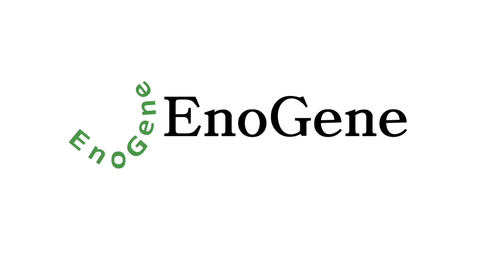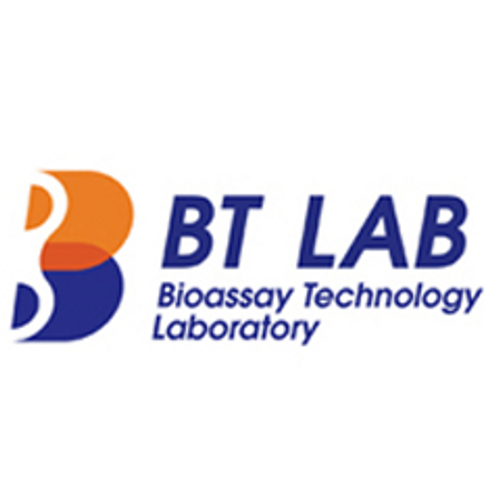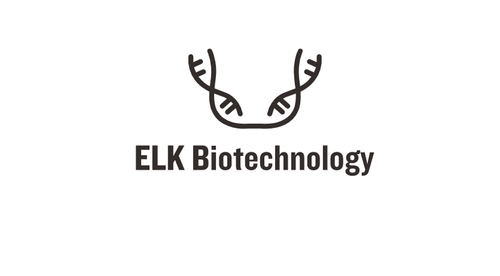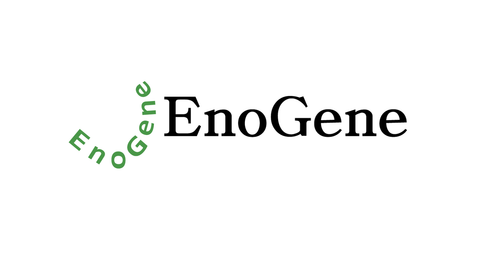Product Description
YTHD2 Antibody (C-term) [APR04101G] | Leading Biology
Product Category: Polyclonal Antibodies
Host: Rabbit
Species Reactivity: H
Specificity: This YTHD2 antibody is generated from rabbits immunized with a KLH conjugated synthetic peptide between 551-579 amino acids from the C-terminal region of human YTHD2.
Cellular Localisation: Cytoplasm, cytosol. Cytoplasm, P-body. Cytoplasm, Stress granule. Nucleus. Note=Localizes to the cytosol and relocates to the nucleus following heat shock stress (PubMed:26458103) Can partition into different structures: into P-bodies in unstressed cells, and into stress granules during stress (PubMed:31292544)
Molecular Weight: 62334
Clone: Polyclonal
Gene Name: YTHDF2 {ECO:0000303|PubMed:24284625, ECO:0000312|HGNC:HGNC:31675}
Gene ID: 51441
Function: Specifically recognizes and binds N6-methyladenosine (m6A) - containing RNAs, and regulates their stability (PubMed:24284625, PubMed:26046440, PubMed:26318451, PubMed:32492408) . M6A is a modification present at internal sites of mRNAs and some non-coding RNAs and plays a role in mRNA stability and processing (PubMed:22575960, PubMed:24284625, PubMed:32492408, PubMed:25412658, PubMed:25412661) . Acts as a regulator of mRNA stability by promoting degradation of m6A-containing mRNAs via interaction with the CCR4-NOT and ribonuclease P/MRP complexes, depending on the context (PubMed:24284625, PubMed:26046440, PubMed:27558897, PubMed:30930054, PubMed:32492408) . The YTHDF paralogs (YTHDF1, YTHDF2 and YTHDF3) share m6A-containing mRNAs targets and act redundantly to mediate mRNA degradation and cellular differentiation (PubMed:28106072, PubMed:32492408) . M6A-containing mRNAs containing a binding site for RIDA/HRSP12 (5'-GGUUC-3') are preferentially degraded by endoribonucleolytic cleavage: cooperative binding of RIDA/HRSP12 and YTHDF2 to transcripts leads to recruitment of the ribonuclease P/MRP complex (PubMed:30930054) . Other m6A-containing mRNAs undergo deadenylation via direct interaction between YTHDF2 and CNOT1, leading to recruitment of the CCR4-NOT and subsequent deadenylation of m6A- containing mRNAs (PubMed:27558897) . Required maternally to regulate oocyte maturation: probably acts by binding to m6A-containing mRNAs, thereby regulating maternal transcript dosage during oocyte maturation, which is essential for the competence of oocytes to sustain early zygotic development (By similarity) . Also required during spermatogenesis: regulates spermagonial adhesion by promoting degradation of m6A-containing transcripts coding for matrix metallopeptidases (By similarity) . Also involved in hematopoietic stem cells specification by binding to m6A-containing mRNAs, leading to promote their degradation (PubMed:30065315) . Also acts as a regulator of neural development by promoting m6A-dependent degradation of neural development-related mRNA targets (By similarity) . Inhibits neural specification of induced pluripotent stem cells by binding to methylated neural-specific mRNAs and promoting their degradation, thereby restraining neural differentiation (PubMed:32169943) . Regulates circadian regulation of hepatic lipid metabolism: acts by promoting m6A-dependent degradation of PPARA transcripts (PubMed:30428350) . Regulates the innate immune response to infection by inhibiting the type I interferon response: acts by binding to m6A-containing IFNB transcripts and promoting their degradation (PubMed:30559377) . May also act as a promoter of cap-independent mRNA translation following heat shock stress: upon stress, relocalizes to the nucleus and specifically binds mRNAs with some m6A methylation mark at their 5'-UTR, protecting demethylation of mRNAs by FTO, thereby promoting cap-independent mRNA translation (PubMed:26458103) . Regulates mitotic entry by promoting the phase-specific m6A-dependent degradation of WEE1 transcripts (PubMed:32267835) . Promotes formation of phase-separated membraneless compartments, such as P-bodies or stress granules, by undergoing liquid-liquid phase separation upon binding to mRNAs containing multiple m6A-modified residues: polymethylated mRNAs act as a multivalent scaffold for the binding of YTHDF proteins, juxtaposing their disordered regions and thereby leading to phase separation (PubMed:31388144, PubMed:31292544, PubMed:32451507, PubMed:31642031) . The resulting mRNA-YTHDF complexes then partition into different endogenous phase-separated membraneless compartments, such as P-bodies, stress granules or neuronal RNA granules (PubMed:31292544) . May also recognize and bind RNAs modified by C5-methylcytosine (m5C) and act as a regulator of rRNA processing (PubMed:31815440) .
Summary: Tissue Location: Highly expressed in induced pluripotent stem cells (iPSCs) and down-regulated during neural differentiation
Form: Purified polyclonal antibody supplied in PBS with 0.09% (W/V) sodium azide. This antibody is purified through a protein A column, followed by peptide affinity purification.
Storage: Maintain refrigerated at 2-8°C for up to 2 weeks. For long term storage store at -20°C in small aliquots to prevent freeze-thaw cycles.
Application: WB
Dilution: WB--1:1000
Synonyms: YTH domain-containing family protein 2, CLL-associated antigen KW-14, High-glucose-regulated protein 8, Renal carcinoma antigen NY-REN-2, YTHDF2, HGRG8
 Euro
Euro
 USD
USD
 British Pound
British Pound
 NULL
NULL

![YTHD2 Antibody (C-term) [APR04101G] YTHD2 Antibody (C-term) [APR04101G]](https://cdn11.bigcommerce.com/s-452hpg8iuh/images/stencil/1280x1280/products/865430/1157497/logo__92149.1659788186__86279.1659862462.png?c=2)
![YTHD2 Antibody (C-term) [APR04101G] YTHD2 Antibody (C-term) [APR04101G]](https://cdn11.bigcommerce.com/s-452hpg8iuh/images/stencil/100x100/products/865430/1157497/logo__92149.1659788186__86279.1659862462.png?c=2)
![YTHD2 Antibody (C-term) [APR04101G] YTHD2 Antibody (C-term) [APR04101G]](https://cdn11.bigcommerce.com/s-452hpg8iuh/images/stencil/500x659/products/865430/1157497/logo__92149.1659788186__86279.1659862462.png?c=2)





![Aurora-C Antibody (C-term) [APR32362G] Aurora-C Antibody (C-term) [APR32362G]](https://cdn11.bigcommerce.com/s-452hpg8iuh/images/stencil/500x659/products/872607/1164674/logo__92149.1659788186__46763.1659868725.png?c=2)
![c-fos Antibody (C-term) [APR32301G] c-fos Antibody (C-term) [APR32301G]](https://cdn11.bigcommerce.com/s-452hpg8iuh/images/stencil/500x659/products/872546/1164613/logo__92149.1659788186__49531.1659868701.png?c=2)
![c-KIT Antibody (C-term) [APR30524G] c-KIT Antibody (C-term) [APR30524G]](https://cdn11.bigcommerce.com/s-452hpg8iuh/images/stencil/500x659/products/870769/1162836/logo__92149.1659788186__87736.1659866868.png?c=2)
![ADA Antibody (C-term) [APG01544G] ADA Antibody (C-term) [APG01544G]](https://cdn11.bigcommerce.com/s-452hpg8iuh/images/stencil/500x659/products/863738/1155805/logo__92149.1659788186__78892.1659859883.png?c=2)